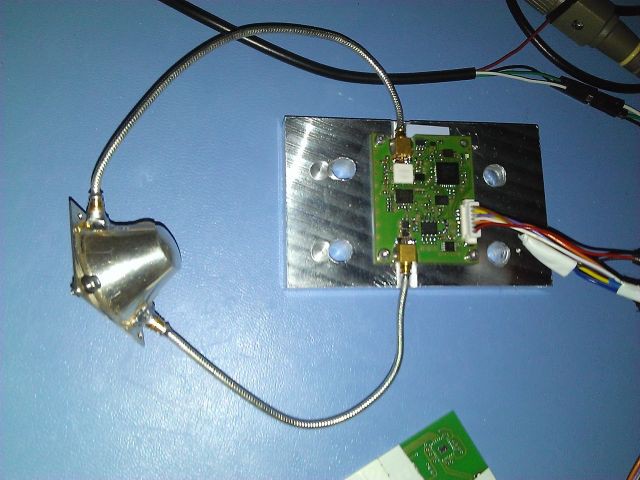The last board showed some power leak. The expected power could not be reached. It even degraded to 40mW - bad. Now I made a new board with better connectors and more careful routing which is ready for testing in Dresden.
It is prepared for the highly sensitive scale and can deliver more than 200mW with 24GHz at 85°C (after cable- and connector lossed), so we should not get thermal issues this time. The ALU-Plate will be also fixed to the scale for better heat dissipation.The cavity is new (blogged about it before). It shows two clean resonance peaks at which we will test for thrust.Sweeps will also be made in case there are some other phenomena which may occur beside the two resonance frequencies.
For an eventual integration into a satellite, the board can find and track the resonance peaks automatically.
I´ll make a 360° video of the test preparation in Dresden (if allowed).

 Paul Kocyla
Paul Kocyla
Discussions
Become a Hackaday.io Member
Create an account to leave a comment. Already have an account? Log In.
Roger Shawyer is working now on a superconducting version of this device. What the world is testing now is a crude testdevice. Your babydrive is one of them . He claims he can build a engine capable of 30kN/kW. thats a lot! With tree of these you can lift a car easy! The big kerfuffle over this is not the drive itself but how to explain how it works without breaking Newton's third law. And just like lots of people i was thinking about it as wel. I came with this theory: This device transforms inside the cavity a heatwave into a radiowave within the same wavelength. As the cavity is a conducting copper device the thermal wave is transformed trough electrons from the inside trough the outside of the cavity and due its a single wavelength it reverts back to a heatwave (in very small amounts) Copper is a large atom (just like silver) and is used in ceramic superconducting materials as well, but has more electrons to transmit the waves outside the cavity as directional radiation pressure without any dispersion and so thrust.. And this theory doesnt break a law.
Are you sure? yes | no
"the board can find and track the resonance peaks automatically."
Does the frequency tracker use feedback from the 2nd port on the picture, meaning the tracking is based on reflected power?
Are you sure? yes | no
Feedback is taken from the second port through a short stub antenna. In case of resonance the RF power rises significantly.
The Q factor can be easily determined by obtaining the 3dB-width of the peaks.
Are you sure? yes | no